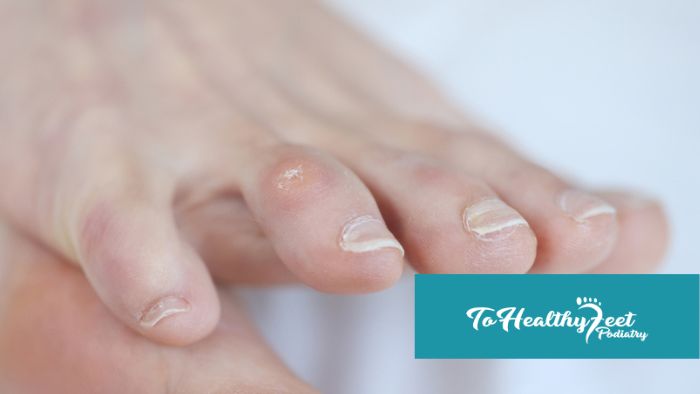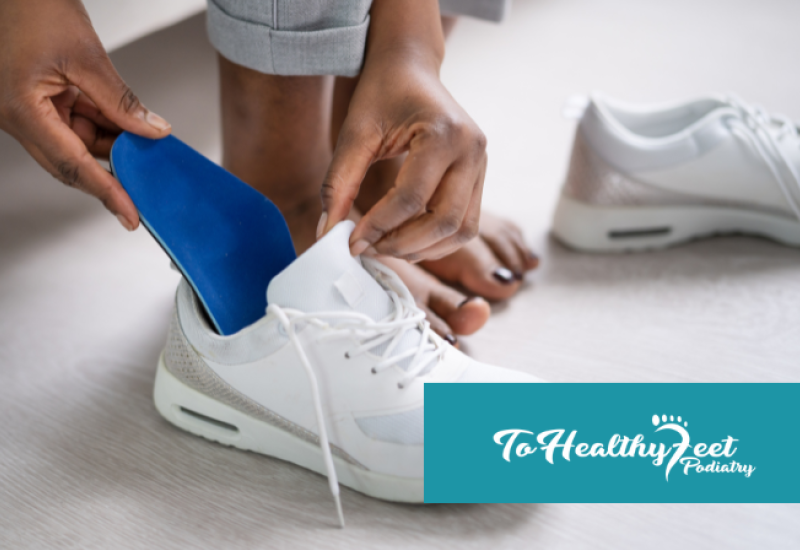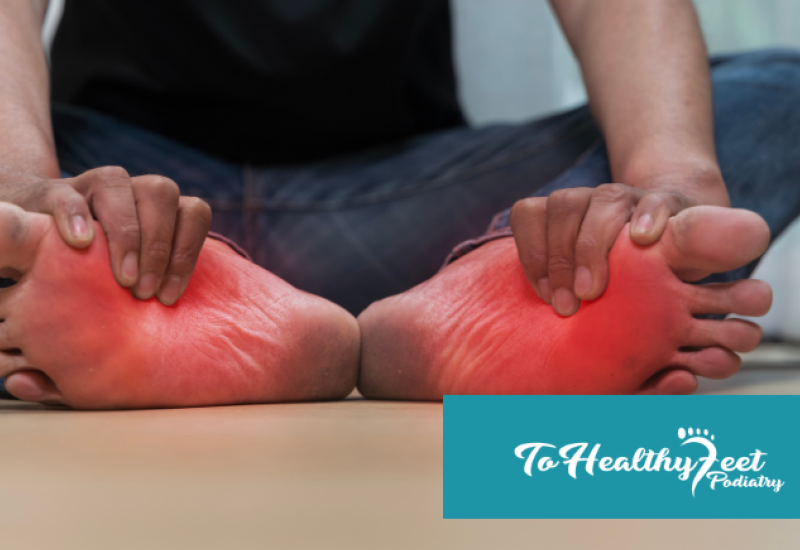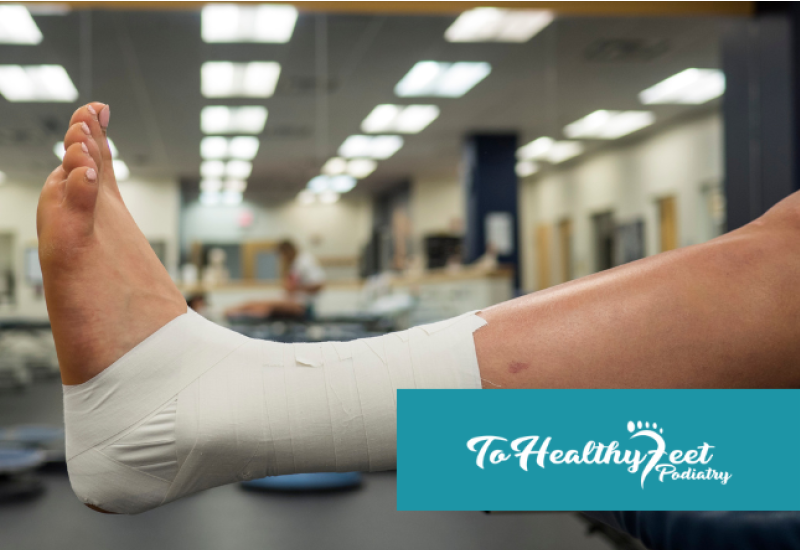Defining What a Corn Is and How It Develops
There are two different types of corns that can develop, both usually develop on the feet.
- Hard corns typically form on either the tops of your toes or along the outer edges of your littlest toe.
- Soft corns tend to form between the toes.
The signs and symptoms of a corn are similar to a callus, although a corn may hurt when you apply pressure to it. If you notice the following signs, you might have a corn:
- Thick, rough areas of skin
- Hardened and raised bumps
- Flaky, waxy, or dry skin
- Feeling pain or tenderness beneath the skin.
A corn can begin developing due to repeated friction and pressure. Some of the things that can cause a corn include:
- Wearing shoes that are too tight (or frequently wearing high heels). If your shoes are too tight, or if you wear high heels regularly, you might experience corns forming in areas where your shoes are their tightest or applying the most pressure to your feet.
- Ill-fitting socks. Although less common, if your socks simply do not fit right, the pressure and/or friction of your feet and toes rubbing up against a seam can cause corns.
- Not wearing socks. If you do not wear socks at all, you are likely to notice inflamed areas on your feet and toes. Frequently wearing shoes without socks can lead to corn development.
- Genetics. If you notice that corns are forming repeatedly in areas that do not bear weight – such as on your palms or the soles of your feet (keratosis punctata) – then it is likely that you have inherited a genetic condition.
Typically, corns will disappear on their own if you take steps to alleviate their cause. There are also a variety of home remedies that can help prevent them. For more information about caring for your feet at home, read 9 Ways to Take Care of Your Feet At Home and 4 Ways an Epsom Salt Soak Benefits Your Foot Health. If your corns persist, there are treatments available. Three common treatments for corns are medicated treatments, debridement, and custom orthotics.
Comprehensive Foot Care In NYC
Corns can be a frustration, but they are preventable. They can also be treated by a licensed podiatrist, who can give you advice on how best to care for your feet. Given that corns are different from calluses – and can be painful – it is important that you see a podiatrist for a corn treatment plan.
At To Healthy Feet Podiatry, we offer treatment options for your corns. We provide accurate diagnosis and comprehensive foot and ankle care, with the tools and technologies needed to provide a variety of specially tailored treatment options at each of our Manhattan podiatry clinics. If you need immediate treatment for your corns, call To Healthy Feet Podiatry at 917-398-3668 or fill out the contact form to book your appointment at our Upper East Side, Times Square, Midtown Grand Central, or Downtown Wall Street locations today.
FAQ
Q: Do corns ever go away?
A: If you reduce the pressure or friction, then they may go away on their own. However, you can try treating them by soaking your feet in warm water and gently removing any excess dead skin. When your corn persists and for quick pain relief and to prevent corns from recurring, your podiatrist can provide easy and non-invasive treatment.
Q: What is the difference between corns and calluses?
A: Calluses are typically an area of thickened skin. Corns, however, usually have a thick knot of dead skin at their center. Corns are either hard, which typically develop on the tops or sides of toes, or soft, where they usually develop between toes.
Q: Can a corn be cancerous?
A: No, corns are not cancerous. However, if you notice an unfamiliar or unusual lump or inflammation on your feet, you should consult with your podiatrist immediately.




